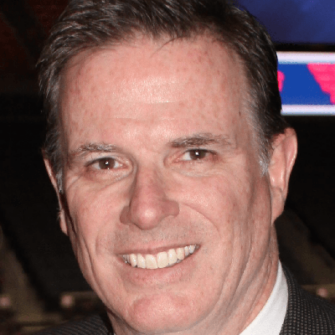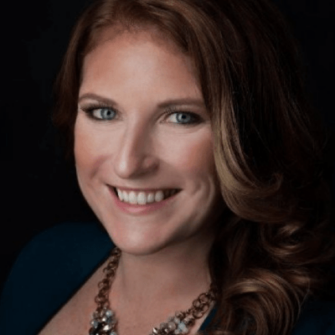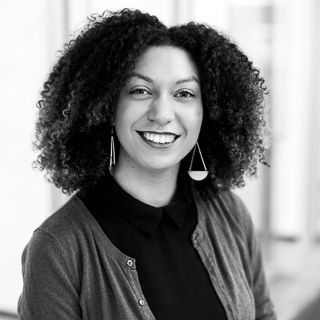Financial Literacy for High School Students

High school is a critical time for students to develop the personal finance skills they will need to live independently as adults. Mastering foundational financial literacy concepts is the best way to set them up for a life full of healthy financial habits.
Students at this age may already be familiar with money management concepts like credit or loans and how to use them. But now it’s time to dig deeper and teach them real-world applications of financial choices.
In this financial literacy guide for high school students, we cover the following:
- 5 key financial literacy concepts
- Online resources for teaching financial literacy to high school students
- Apps and games for teaching financial literacy to high school students
- Expert tips for teaching financial literacy to high school students
5 key financial literacy concepts
High school students need to know their higher education and future career options. This includes financing options (i.e. student loans) and how to choose a career based on an expectation of quality of life, hopefully while living within their means.
We put together the need-to-know financial concepts that high school students should master before graduating and entering the real world — whether that’s tackling higher education or finding a job. Plus, we’ve included great insights from educators familiar with teaching personal finance to high school students.
Concept No. 1: Budgeting to achieve financial goals
Teens should already know about income and expenses. Now is the time for them to master how to control the inflow and outflow of money by creating and sticking to a spending plan.
This is especially useful considering that many students in high school may earn money of their own, whether from a summer job or paid internship.
Key Points:
- Starting a budget. Budgeting is all about prioritizing income and expenses. Income should equal expenses, with every dollar assigned to a purpose, including saving. By assigning each dollar to an expense, you’ll know where and how your money is spent.
- Saving. Putting aside money now allows us to have money to spend later. By contributing to a savings account like an emergency fund, you can achieve short-term and long-term financial goals.
Avoid debt by budgeting
Ultimately, debt boils down to a budgeting issue. A proper budget can set a foundation for how you treat income and expenses. A budget ensures that money is allocated to needs each month – bills, savings, and debt – before wants. Distinguishing between essentials and nonessentials is an important foundation for financial success.
A budget also includes a plan for how to save money – whether it’s for short- or long-term goals.
Concept No. 2: Consumer skills are based on informed decisions
The ability to make smart decisions about where and how to spend money is a powerful tool. Teens can practice their consumer decision-making skills with real-world scenarios, such as making smart purchases, by comparison shopping.
Key Point:
- Comparison shopping. Get the most bang for your buck by shopping around before making a purchase. By spending money wisely, you can balance the quantity and quality of each purchase in order to get the best value.
Invest early
Leif Kristjansen, founder of retirement advice site FiveYearFIREescape.com, wishes he learned the value of investments in high school. For example, taking advantage of compound interest, young investors can secure a financial head start over their cohort.
“The power of compounding over time makes a huge difference when you have a big runway,” Kristjansen said.
The magic of compound interest is that money invested will grow steadily over time. Essentially, it’s interest earned on interest.
“The main thing kids have as an advantage over adults is that they have more time,” he said, adding, “but if they don't know how to use it they will miss out on their greatest strength!”
Concept No. 3: Understand the risks of credit and loans
High school students may want or need a credit card or a student loan soon.
Before entering an agreement with the chance of racking up debt, students need to know about the risks of different types of borrowing, including both credit and loans.
Teens also need to know about ways to minimize risk, such as by purchasing insurance. While they are likely not responsible for purchasing insurance right now, they will be in the future when they own a car or rent an apartment.
Key Points:
- Debt. Credit and loans can cause debt. Debt should be avoided as it counts against a borrower’s total wealth.
- Risk. Borrowing on credit comes with risk. Interest is charged on borrowed money, making each purchase more expensive than the cost of the original expense. The biggest risk with credit is missing a payment, which can impact a borrower’s creditworthiness and potentially lead to repossession or foreclosure.
- Insurance. There are ways to mitigate risk, such as by purchasing insurance that pays back the policy holder in case of a valid claim. Insurance can cover health and property, like cars and homes.
Communicate about financial difficulty
Larry Duffany, a financial coach at Raising Hope, had no clue about money as a young adult. He now teaches clients how to fix or avoid the financial mistakes he once made.
Duffany said he wishes he learned “how to speak up for himself when things were going wrong.”
Duffany hid his financial truth from his creditors, which ultimately cost him.
It’s alright to not know everything when it comes to finances – no one does. It’s important to reach out to a financial professional during these times, but to also be honest with them. Instead of digging a financial hole, work with the professionals to find a solution.
“Creditors will work with people who will speak with them,” Duffany said. “Creditors have support programs that will assist clients as they strive to get their finances in order.”
Concept No. 4: Reap the benefits of credit and loans
There is such a thing as good credit, which allows the borrower to make purchases that contribute to building wealth. For instance, being able to pay for college with student loans or buy a house with a home loan are ways credit allows borrowers to invest in long-term choices.
Teens should learn how to effectively manage credit and loans in order to maintain a healthy credit history, increase a credit score, and build wealth.
Key Points:
- Credit. Credit is a tool that can be good or bad. Credit card debt is typically bad as it charges interest on purchases a borrower can’t afford. Loan debt can be good (but not always) if student loans allow a borrower to finance an education with the hope of earning a higher income.
- Building wealth. By taking on credit or loans in order to invest in a financial goal, such as education or homeownership, a borrower can start building wealth while paying off debt. Saving and investing are the best strategies to build wealth.
Set healthy financial goals
We spoke to Dave Mason, an author of several finance books, about the lesson he wishes he knew when first starting out: the importance of goal setting.
“I never had a financial goal, nor did I have any idea what a healthy financial goal should be,” Mason said.
A financial goal is like a roadmap to the future. Goals can help us put money toward achieving milestones like freedom from debt, homeownership, or retirement.
“The goal I would now recommend is financial independence, which you achieve when your passive income exceeds your cost of living,” he said. “Once you hit financial independence, you have tremendous ability to plan your life around your passions, not just around your earnings.”
Concept No. 5: Education and career choices impact quality of life
After high school graduation, teens have the choice to either pursue education or get a job. Teens will have to envision the life they want to lead and make the choice based on understanding the correlation among education, career, and earning potential.
By understanding education and career opportunities, a student can make an informed decision on life-altering choices, from the college they attend to the amount they take out in student loans.
Key Point:
- Earning potential. A lifetime income potential is how much you can expect to make with a top salary at the height of a field or profession. Take the education and career steps needed to achieve professional and financial goals.
Prepare for financial milestones
We spoke to Krista Goodrich, author of The Boss Lady Investor™, who said she wishes she spent more time learning about real estate in high school.
High school personal finance courses often overlook how to accomplish financial milestones, such as buying a home. That’s a shame considering 63% of millennial homebuyers have regrets related to underestimating the true costs of buying and owning a home.
“While I was busy learning about parallelograms and how to measure a triangle, I wish I had learned how to negotiate a real estate deal,” Goodrich said.
She also wishes she learned:
- How to read a mortgage
- How to deal with home repairs
- Where to be wary during a home inspection
“More high school graduates will likely purchase a home than ever need to measure a triangle,” she said, adding, “so a money course on real estate seems like a no-brainer to me.”
Online resources for teaching financial literacy to high school students
The best resources for teaching high schoolers financial literacy, including nonprofits and governmental departments.
National Endowment for Financial Education’s (NEFE’s) High School Financial Planning Program
- For students, educators, and parents
- Provides curriculum, lesson plans, handouts, and performance assessments
The NEFE’s High School Financial Planning Program® (HSFPP) is a financial literacy program based on the foundations of personal finance, but made relevant to teens’ lives. The program provides a curriculum, lesson plans, and materials for in-person teaching, and is best suited for educators who plan to teach in a classroom, workshop, or in a one-on-one scenario.
National Financial Educators Council (NFEC)
- For educators and parents
- Provides curriculum, lesson plans, and presentations
The NFEC provides financial literacy curriculum catered to high school students for educators. The program is designed to be both rigorous and engaging for students, with high-quality materials like lesson plans and presentations for educators. The lesson plans are touted as being accessible to any audience, regardless of age and socioeconomic status.
- For educators and parents
- Provides lesson plans and worksheets
The InCharge financial literacy program contains a whopping 14 lesson plans and complementary worksheets. That’s enough material for a full semester course in personal finance! It comes with a teacher’s guide, student’s guide, and plenty of presentation material.
- For students, educators, and parents
- Provides online courses and articles
Interested in money management? The Hands on Banking® learning center provides plenty of resources, like in-depth articles, to answer questions about budgeting and credit. The online courses are self-directed, and allow the user to learn about financial literacy topics at each stage of life. For high schoolers, there are classroom resources that are great for educators.
Federal Deposit Insurance Corporation’s (FDIC’s) Money Smart for Young People
- For educators and parents
- Provides lesson plans
The FDIC’s ’s Money Smart for Young People series contains four age-based curriculum programs at no cost to educators. The high school-appropriate curriculum includes lesson plans, guides, and resources that are easy enough for both educators and parents to use. The best part: Materials can be integrated into preexisting school courses, like English or Math.
Apps and games for teaching financial literacy to high school students
High school students can flex their new financial literacy skills by using these fun and educational games and apps.
- Cost: free
- Available for iOS and Android
Visa created this free app to help teens and their parents budget for prom and prom-related expenses. Plan’it Prom is essentially a budgeting app that includes a countdown to the big day, a timeline of when to save, and a budget calculator. Students can learn to cut costs and achieve their short- or long-term budget goals by planning for a real event.
- Cost: free
- Available for iOS and Android
Calling all sports enthusiasts, Visa created an NFL-themed mobile game that also teaches personal finance skills. The game is fast-paced and interactive with newly released 3D graphics. Educators can assign the game to students and then track their progress with the game’s useful ability for students to email their Financial Football results.
- Cost: free
- Available for web, iOS, and Android
SIFMA Foundation’s Stock Market Game™ is an online simulation that allows students to make investment decisions in a global capital market. The Stock Market Game™ has different versions for grades 4 through 12. According to the website, educators enjoy the game’s results of increased classroom engagement and valuable financial lessons. As a bonus, once a classroom has signed up, each student will be able to access their personal portfolio on the accompanying mobile app.
- Cost: free
- Available for web
Gen i Revolution is a mission-based online game in which middle or high school students can save people in financial trouble. Students need to log on, create an account, pick their operative, and then start exploring the game universe and working to complete each of the 16 missions. The game also allows students to compete against their classmates, making it great for a classroom-wide competition.
- Cost: free
- Available for web
Consider this: Immortality might not bite if you have a chance to pay down debt and build wealth...forever.
Vampires and financial literacy unite in this online game that encourages saving and investing. Bite Club teaches students that each of their financial choices can have a huge impact on their future. Players will manage resources for 15 rounds (the game equivalent of 45 years) and plan for retirement while living within their means.
Expert tips for teaching financial literacy to high school students
Teach financial literacy through art
Clarence McFerren II, Ed.S., public high school educator
“As a former finance specialist paratrooper in the U.S. Army, I understand the importance of [personal finance] and I take it upon myself to infuse financial literacy in my performing arts classes.
“My dance and theater students are inspired to develop critical thinking, problem solving, and responsible decision-making skills throughout the course. I use percentages to make sure the students understand how to calculate sales tax, interest rates, and proposed discounts so they can make informed decisions about dance attire, performance make-up, costumes, and set design materials, etc. This allows the students to learn about real-life scenarios within the field of the arts that can translate to a wide range of areas, such as buying a car, house, groceries, cell phone, shoes, and clothing.
“Additionally, I hope they start to incorporate some of the skills they are learning now into their daily practice to perfect them over time with trial and error before it’s too late.”
Focus on the life cycle of student debt
Jim Anderson, founder of Making College Worth It
“I believe high school students should have an understanding of the financial situations ahead of them. Given my profession of college and financial aid planning, I believe students should understand the life cycle of student debt. That includes different kinds of student loans, their terms (subsidized or unsubsidized), and repayment options. [They should partake in] sample run-throughs for each option and their [anticipated] career and salary. Effectively, they should play The Game of Life with various debts and payments.”
Relate real-world financial situations
Jim Wasserman, retired teacher of economics and media literacy and writer at Your Third Life
“There are two errors many education programs make in teaching financial literacy to students:
“Students are not future participants in finance and consumption. One textbook in my class kept discussing how to prepare students for making financial decisions. In fact, students have been in the game since they were first exposed to media. Their values, attitudes, and habits about money have been shaped since childhood. Unfortunately, the message tends to be ‘spend now and worry about saving someday.’
“Real-world financial examples need to be from high schoolers’ real world, not the adults. Often, educators teach financial literacy by having kids pretend to buy a home, pretend to have a family, and [acting out] other examples they will probably face in the future. The problem is the examples are still theoretical for most high schoolers, so they remain abstract and don't stick. Using smaller examples [that are] closer to the teen experience — financing a car or other desired product, [deciding if it is] worth it to get a job after school, even planning a budget for prom — go a long way to make it real for kids, giving them a sound basis to build on.”
Make a connection to the “why” of personal finance
Brilene Faherty, curriculum director at Money Experience
“We need to focus first on teaching students why they should care about their finances rather than lecturing on how they should handle them. Education that focuses on ‘why’ will motivate students to stay involved in the ‘how’ of each decision throughout their financial lives.
“At the high school level, I feel strongly that we should start with these basics:
“Focus on personal priorities. Have the students’ stock of what is actually important to them and what makes them happy, and then explore financial decisions that reflect that hierarchy.
“Connect their finances and their real lives by thinking about quality of life. Once students identify what’s important, it’s easier to pinpoint and weed out any spending habits that are not aligned with their personal priorities.
“Consider and personalize long-term outcomes. Help students empathize with their future selves and priorities so they can buckle down on saving for the lifestyles that appeal to them most.”

Jim Anderson is the founder of Making College Worth It. After more than 20 years in the IT industry, Anderson ventured into a new direction: college and financial aid planning. He combined his interest and knowledge in personal finance — from a stint as a financial planner in the 90’s — with research to find colleges for his oldest three children. The result: a business that not only addresses the college search process, but the cost of college and ways to reduce that cost. For more than 8 years, Making College Worth It has been helping families find great/affordable college programs that will prepare students for their first job and career.

Brilene Faherty is a former financial advisor and curriculum director at Money Experience, a financial education company that focuses on personal priorities and quality of life. She is now a Senior Sales Manager at PerformLine.

Clarence McFerren II is a graduate of Middle Tennessee State University, American University, and Cambridge College. He has studied mass communications, dance, speech, theater, arts management, and educational leadership. McFerren launched his career in Washington, D.C. public charter schools, where he began his specialization in arts education, focusing on interdisciplinary and inquiry based learning. It was in these capacities that he cultivated his optimistic leadership style to engage the multiple intelligences of young minds to fearlessly think independently.

Jim Wasserman taught economics and media literacy for more than 20 years. Retired from the classroom, he continues to write on education, economics, media literacy, and financial literacy. He is the author of a three-book series, “Media, Marketing, and Me,” which are teacher’s guides for introducing media literacy and behavioral economics to elementary, middle, and high school students. With his wife and two feline overlords, he also maintains a blog, yourthirdlife.com, about exploring the world during retirement.

Leif Kristjansen is the founder of FiveYearFIREescape where he blogs about his early retirement and how others can do the same. Kristjansen worked as a scientist in Toronto, Canada, but after enough late nights and stress-filled days, he decided to get out. He quit working at age 32 with a wife, kids, and a house in a pricey city. His wife even retired two years before. He accomplished this through saving, financial savviness, and rental houses.

Larry Duffany is a master financial coach and a career educator at Raising Hope. Combining financial lessons with his training and experience as a high school teacher and adjunct college professor, Duffany walks alongside his clients raising hope for a better tomorrow. His goal is to move his clients from surviving to thriving by changing their money habits one day at a time.

Dave Mason is the author of The Cash Machine: A Tale of Passion, Persistence, and Financial Independence. He believes there’s no better way to master an area of struggle than to research and write a novel on the subject. When he realized his financial struggles were the result of a poor understanding of money, Mason decided to write a personal finance novel.

Krista Goodrich is a serial entrepreneur, investor, author, and motivational speaker. She is known as The OG Boss Lady Investor™. Goodrich also offers online finance courses and wrote the book, The Boss Lady Investor™. She lives in Daytona Beach and is an advocate for growing financial literacy in women and helping others learn about personal finance and creating wealth.
Please note the below article contains links to external sites outside of OppU and Opportunity Financial, LLC. These sources, while vetted, are not affiliated with OppU. If you click on any of the links you will be sent to an external site with different terms and conditions that may differ from OppU’s policies. We recommend you do your own research before engaging in any products or services listed below. OppU is not a subject matter expert, nor does it assume responsibility if you decide to engage with any of these products or services.




